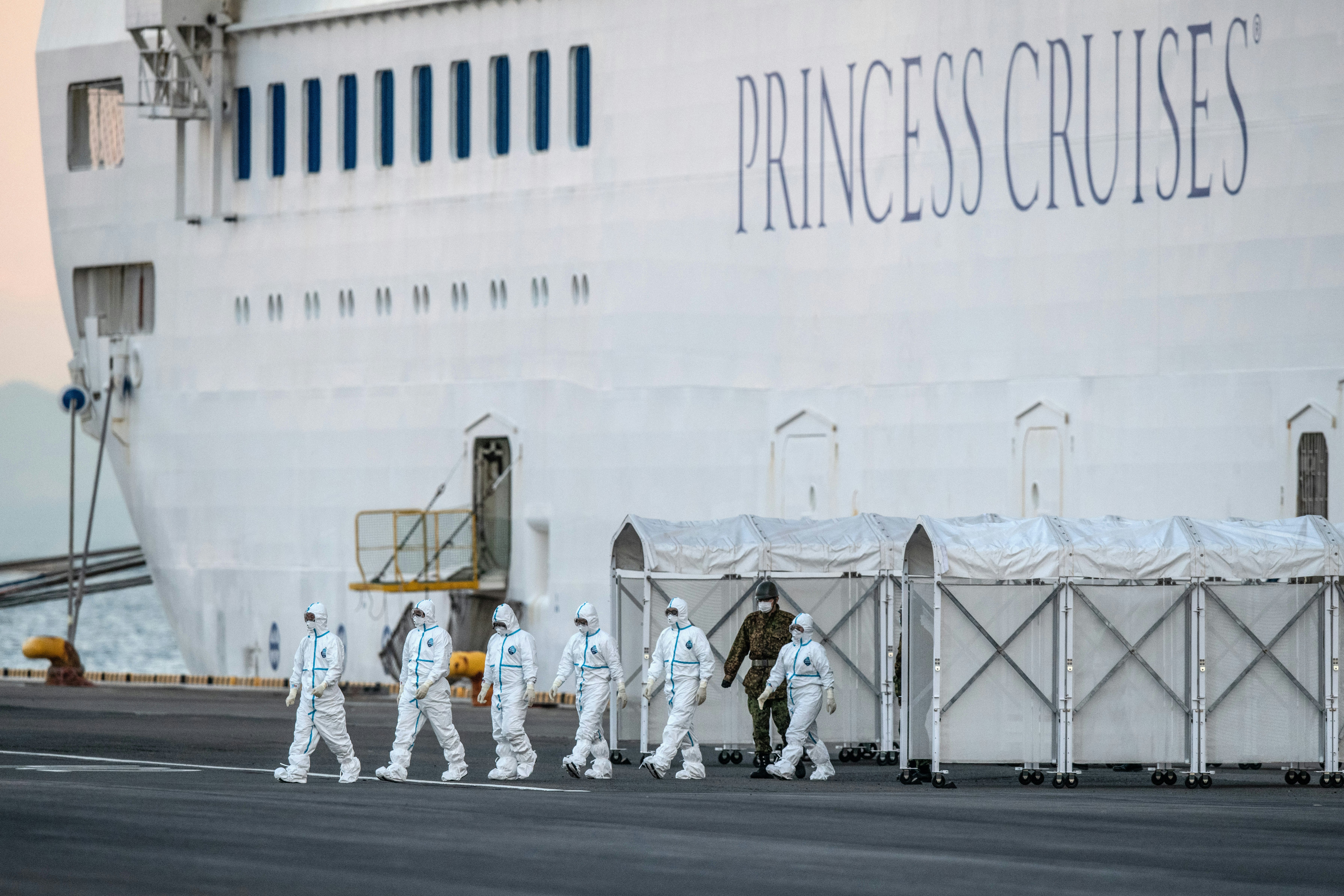Carnival Cruise Line announces it will resume service August 1st
May 4, 2020 • 4 min read

The Carnival Cruise Ship "Triumph" sits in the Houston Port in Galveston, Texas in 2014 © Thomas Shea / Getty Images
Carnival Cruise Line has officially announced that it intends to resume service as soon as August 1, with a handful of cruises disembarking from ports in Galveston, Texas as well as Cape Canaveral and Miami, Florida. But it remains to be seen whether passengers are eager to return aboard, or if they'll agree with the US Center for Disease Control and Prevention that cruising may still be too risky.
"We are committed to supporting all public health efforts to manage the COVID-19 situation," said Carnival Cruise Line in a prepared statement. "We are taking a measured approach, focusing our return to service on a select number of homeports where we have more significant operations that are easily accessible by car for the majority of our guests."

It's been a difficult spring for the cruise industry. The Diamond Princess, operated by Carnival subsidiary Princess Cruises, had the first documented outbreak of COVID-19 on a cruise ship in early February. A month and a half later, the Cruise Lines International Association – a consortium of the majority of the world's cruise ship operators, including Carnival, – responded to the COVID-19 pandemic by voluntarily suspending service for 30 days starting March 13.
Just a day later, the US Center for Disease Control issued its own "No Sail Order" for cruise lines, which now extends until July 24. Both those decisions meant no new ships would be leaving ports of call while governments around the world tried to contain the outbreak of COVID-19, and decide what to do with thousands of confirmed or potentially infected cruise ships passengers who needed to disembark somewhere to seek treatment and return home.
Less than two weeks ago, another ship run by a Carnival subsidiary, the Costa Deliziosa, slipped back into port in Genoa, Italy and released its remaining passengers. It was the last ship belonging to a major cruise line to return to port after what turned out to be a three-and-a-half-month voyage.

In between when the unlucky Diamond Princess became a COVID-19 hotspot and the return of the Costa Deliziosa, Carnival has faced not only revenue loss from its canceled service, but also volatile stock values. Now there's a new Congressional probe into how Carnival handled the outbreak of novel coronavirus.
Over 1,500 confirmed cases of COVID-19 were traced back to Carnival cruise ships, resulting in dozens of deaths – a matter that the U.S. House Committee on Transportation and Infrastructure began investigating on May 1st. But Congress isn't the only body concerned with Carnival's disease prevention capabilities. The CDC has also called into question whether it's safe for cruise ships to return to business as usual.
On March 17, the CDC updated guidelines on its website indicating that "Because of the unprecedented nature of the novel coronavirus pandemic, and the increased risk of transmission of COVID-19 on cruise ships, the US government is advising US travelers to defer all cruise travel."
Those guidelines were also referred to by the US State Department, which noted in a statement on its website that, "US citizens, particularly travelers with underlying health conditions, should not travel by cruise ship. CDC notes increased risk of infection of COVID-19 in a cruise ship environment."

It's also unclear how many cases of COVID-19 will still be active in the United States by August 1. The country has largely taken a state-by-state approach to pandemic response. While several states have managed to "flatten the curve," and are seeing a decline in new cases of COVID-19, Florida and Texas, the two states from which Carnival plans to launch its return to service, are still seeing significant infection rates three months out from Carnival's intended launch date. As of May 3, there was an increase of over 600 new cases in Florida, and over a 1,000 new cases confirmed in Texas for the fourth day in a row.
That uncertainty, and new travel restrictions around the world including a "travel bubble" for Australia and New Zealand, has led to a slew of additional adjustments to service that extend well into the fall. In addition to announcing the August 1 return to service, Carnival also stated that it would be extending a pause in operations through August 31 for the majority of its North American and Australian markets.
That includes the cancellation of all North American cruises from June 27 to July 31, as well as all Carnival Spirit cruises from Seattle to Alaska, as well as Carnival Spirit cruises between Vancouver and Honolulu planned for September 25 and a transpacific cruise between Honolulu to Brisbane slated for October 6.
Carnival plans to use the summer to prepare and assess.
"We will use this additional time to continue to engage experts, government officials and stakeholders on additional protocols and procedures to protect the health and safety of our guests, crew and the communities we serve," said Carnival leadership.
You may also like:
Whales are thriving in oceans without cruise and container ship traffic
How Amtrak trips will change after the COVID-19 pandemic
How Australia scuba tour guides are saving the Great Barrier Reef while tourists are away




